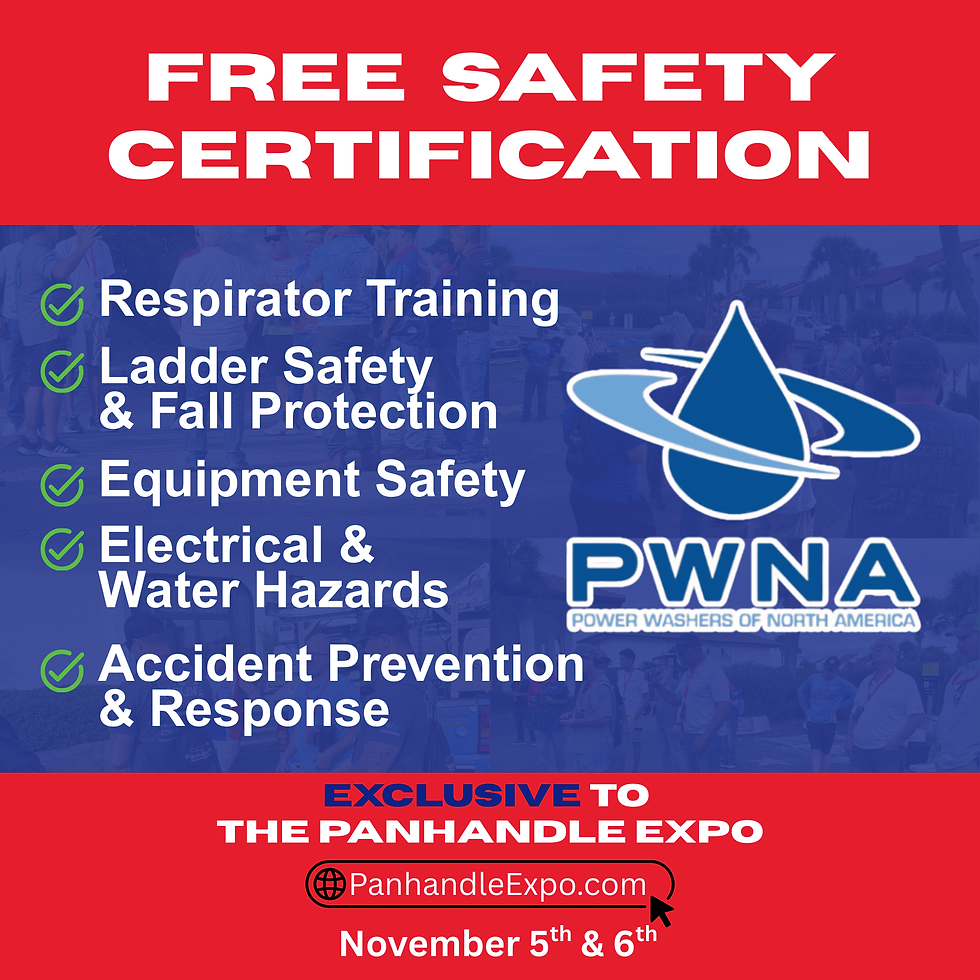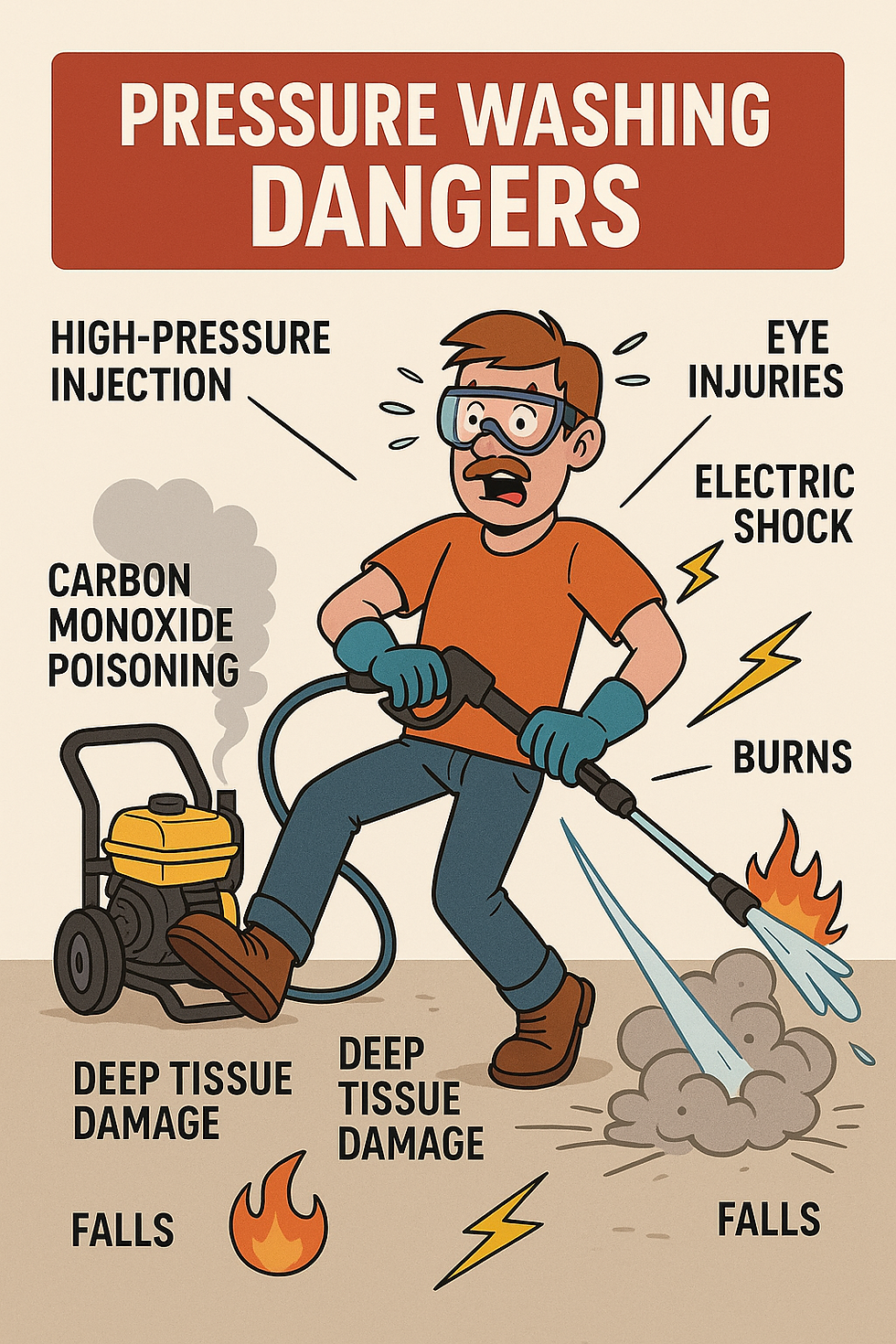The Environment Is Hard on Your Equipment — Here’s How to Protect It. Understanding How Weather, Climate, and Work Conditions Affect Your Tools and Machines
- Trudi Weickum

- Jul 19
- 4 min read

If you work in exterior cleaning, soft washing, or pressure washing, you already know this:
Your equipment takes a beating.
What most contractors don’t realize, though, is how much of that wear and tear doesn’t come from use — it comes from the environment you’re working in.
Heat. Humidity. Dust. Chemicals. Cold.
They all affect your pumps, hoses, electronics, and hardware — and if you’re not factoring those conditions into your maintenance plan, you’re shortening the life of your investment every time you fire it up.
Let’s break it down — and help you make your equipment last longer, even in harsh environments.
🔥 High Temperatures: The Silent Killer
Hot working conditions don’t just affect your crew — they impact your equipment, too.
Lubricants break down faster, causing friction and overheating
Seals and rubber gaskets soften or degrade
Electronics may overheat and malfunction
Motors and pumps run hotter under stress
What you can do:✅ Store gear in shaded or ventilated spaces✅ Monitor temps when running hot water machines✅ Change fluids more frequently in the summer
❄️ Low Temperatures: Brittle Parts = Big Problems
Cold weather brings its own set of risks:
Rubber and plastic parts become brittle and prone to cracking
Water inside hoses, pumps, or valves can freeze and expand, causing major damage
Batteries lose charge faster
Grease and lubricants thicken, reducing flow and increasing strain
What you can do:
✅ Winterize your equipment properly
✅ Drain water from all systems before freezing temps
✅ Use cold-weather rated lubricants and materials
💦 High Humidity = Rust Central
Moisture in the air promotes oxidation — especially on unprotected metal surfaces and electrical contacts.
Internal corrosion shortens the life of fittings, bolts, and electronics
Rust builds up around threads, weakening connections
Moisture in air systems and fuel lines causes efficiency loss
What you can do:
✅ Use anti-corrosion sprays and protective coatings
✅ Keep electronics in sealed, waterproof enclosures
✅ Wipe down and dry tools daily
🌵 Low Humidity: Dries Everything Out
If you’re in a dry or desert climate, the problem isn’t moisture — it’s the lack of it.
Lubricants evaporate or break down faster
Rubber seals and gaskets can dry out and crack
Friction increases, leading to faster wear
What you can do:
✅ Stay on top of lubrication schedules
✅ Inspect hoses and seals more frequently
🌬️ Dust, Debris, and Pollution: The Invisible Threat
Dusty jobsites, construction zones, and even urban air can clog and wear out your equipment quickly.
Dust and grit act like sandpaper on moving parts
Filters clog, causing systems to overheat
Airborne chemicals can corrode and degrade plastics, metals, and seals
What you can do:
✅ Clean filters regularly
✅ Use dust shields or covers in high-particulate environments
✅ Store gear away from active jobsite hazards
🧪 Chemical Exposure: A Recipe for Breakdown
Whether it’s from cleaning agents, nearby industrial facilities, or overspray, chemical exposure can destroy gear fast.
Acids, bases, and solvents can eat through plastics, paint, and seals
Corrosive vapors can damage electronics
Metal components can rust or pit rapidly
What you can do:
✅ Use chemical-resistant components wherever possible
✅ Rinse equipment after chemical exposure
✅ Store chemicals separately from sensitive equipment
☀️ Sunlight: UV Damage Is Real
Long-term exposure to sunlight can:
Fade and crack rubber hoses
Weaken plastic housings and clips
Cause premature brittleness in gaskets and seals
What you can do:
✅ Store your gear in shaded or UV-covered areas
✅ Replace sun-faded components on schedule
✅ Cover hoses and reels when not in use
🌊 Water Ingress: Short Circuits and Rust Buckets
Water getting into your gear — whether from rain, splash-back, or improper storage — is one of the fastest ways to ruin your equipment.
Short-circuits electronics
Corrodes internal metal parts
Causes mold and mildew in enclosed spaces
What you can do:
✅ Waterproof your electronics
✅ Drain and dry gear after every job
✅ Use desiccants in toolboxes or trailer storage
🚫 Overloading: The Human Factor
Even in perfect environmental conditions, overloading your equipment — running it too hard, too long, or too heavy — will burn it out.
What you can do:
✅ Know your system’s limits
✅ Don’t run undersized pumps on oversized nozzles
✅ Schedule downtime and cooldowns, especially in heat
Final Word: Maintenance Is Your First Line of Defense
✅ Regular cleaning
✅ Proper lubrication
✅ Frequent inspections
✅ Timely repairs
All of this can dramatically extend the life of your gear, even if you’re working in brutal conditions every day.
Neglect it? And the environment will chew through your investment faster than any customer ever could.
We Dive Into Equipment Longevity at the Panhandle Pressure Washing Expo
From gear setup to maintenance best practices, chemical resistance to heat control — we cover it all at the Panhandle Expo.
You’ll learn how to:
Get more hours out of your pumps and motors
Choose gear designed for your climate
Maintain your system like a pro
Avoid the little mistakes that cost thousands in replacements
🎟️ Register for the Panhandle Pressure Washing Expo Today
Protect your gear. Extend your profits. Learn from people who’ve seen it all and kept their rigs running strong.
By Trudi Weickum | Industry Educator | Panhandle Pressure Washing Expo








Comments